Description of mako satin and its scope
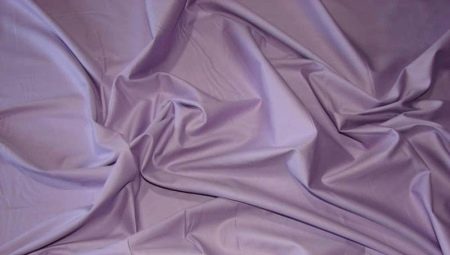
Mako satin is one of the best varieties of cotton fabrics. This material has long won the love of needlewomen, as well as companies that are massively engaged in sewing. It is worth taking a closer look at the properties and features of this unusual material.
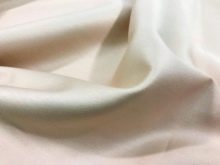
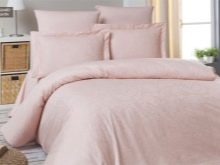
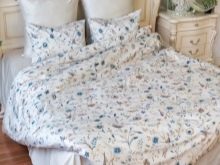
What is this fabric?
Mako satin is a cotton fabric with a very high level of strength. For its production, Egyptian cotton is used, which has long and thin fibers. This cotton is very expensive because it is difficult to grow. When cultivating such a plant, farmers do not use chemical fertilizers and spraying, and the crop yield is low. Therefore, each gram of this cotton is worth its weight in gold.
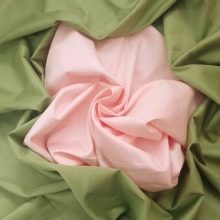
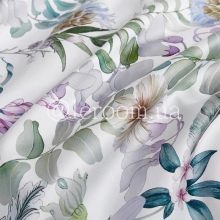
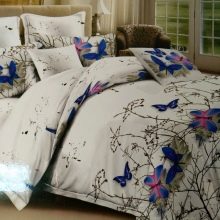
Making mako satin consists of several stages. Cotton raw materials are washed and combed out, the resulting threads are tightly twisted. The more they are twisted, the more effective the material will get. Then it is subjected to mercerization by treating it with an alkali solution. This procedure provides the fabric with a shine that does not wash out even after a huge number of washes and ironings. However, there is also a cheaper procedure called calendering. After it, the shine is also there, but it will disappear as soon as the product is washed for the first time.
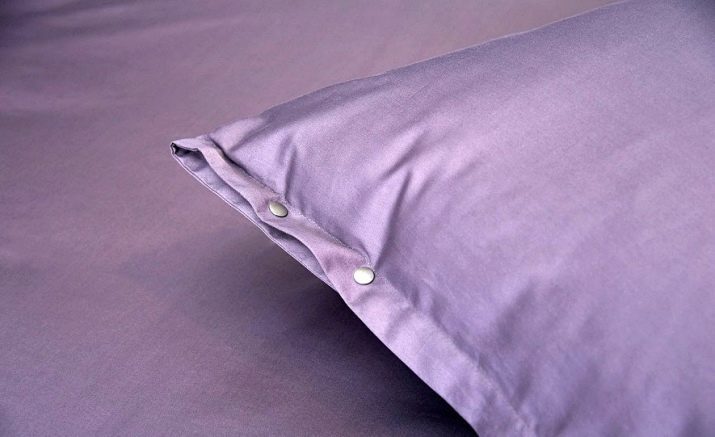
The finished fabric samples are bleached and then dyed. For dyeing, special techniques are used that allow the paint to penetrate deeply into the fibers of the fabric. Thanks to this, it will retain its original shade for a very long time.
Mako satin is an elite fabric that cannot be cheap. Sometimes inexperienced users confuse it with synthetic material, the sheen of mako-satin is so strong.But this is not the case, real satin is entirely made of cotton, which should be indicated on the label.
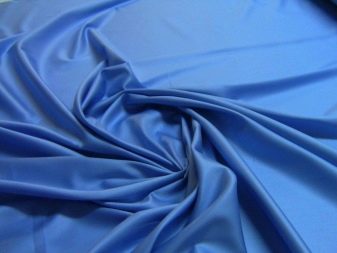
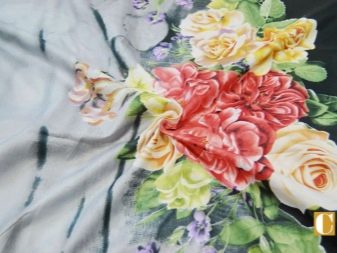
No synthetics are allowed as part of the material. Therefore, if you see the inscription "polysatin", it will mean that there are synthetic additives in the fabric.
History
The first mention of the unique Egyptian cotton dates back to the 19th century. However, the plant was originally used to decorate private gardens and not to make fabric. There are several versions of how it all began. The first tells that outlandish plants grew in the garden of a Cairo governor, whose name was Mako. At the beginning of the 19th century, the Frenchman Louis Jumel visited this garden, who noticed the plant and turned to the Egyptian ruler with a proposal to grow the variety industrially. This cotton was named "mako" after the owner of the garden.
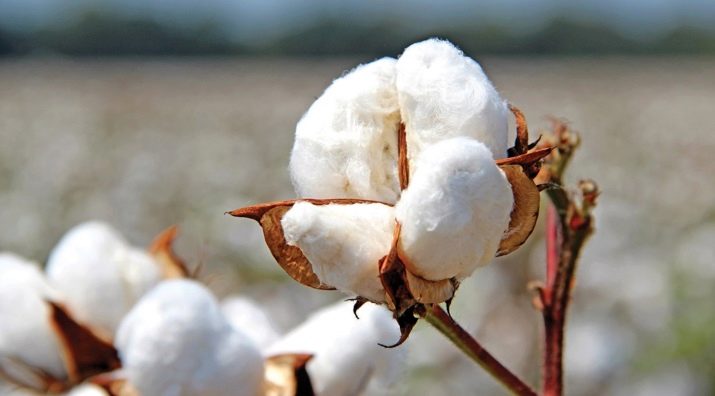
The second theory says that cotton was brought from India, and the governor, together with Louis, convinced the head of state to start growing it. Which of these stories is true is not known for certain. However, in any case, the name of the cotton variety "mako" has survived to this day. In France, the plant was named Jumel in honor of the French discoverer.
Since then, cotton has been domesticated and fabrics have been made from it. By the end of the century, such material spread throughout Europe, and then went further into the world.

Main characteristics
Mako satin is a unique and extraordinary fabric that is extremely popular. The reason for this was the following advantages and characteristics of the material.
-
Ecological cleanliness. Mako satin, if natural, is made entirely of cotton. Since the plant is grown without the use of chemicals, the raw materials are completely natural. No harmful substances are added during the processing. Therefore, products made from this material can be safely taken for children's use.
-
Hypoallergenic. The fabric never causes allergies, which is confirmed by hundreds of reviews.
-
Hygroscopicity. Mako satin is breathable and moisture permeable. That is why products made from it are pleasant to wear.
-
Strength. The described material consists of tightly twisted threads, which give it a very high density. Thanks to this, the products do not deform, do not tear, do not lose their original appearance. Items made of mako satin will serve their owners for years.
-
No build-up of static electricity. This is a very important indicator, because the fabric will adhere to the body. Items made of this material do not electrify, even if they are rubbed or washed without rinsing.
-
Nice touch feeling. Mako satin is similar in texture to silk. It is very pleasant to touch such fabric, because it is always silky, smooth and cool.
-
No shrinkage. Even after numerous washes, the products do not acquire pills. They do not "fit", so there are never any problems with choosing the size.
-
Attractive look. Mako satin looks very impressive. Its subtle and light sheen immediately attracts attention. In addition, on such material, it turns out to create three-dimensional drawings with a 3D effect. Most of the other materials cannot be used for this purpose.


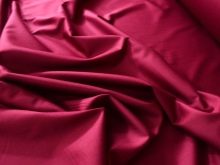
Mako-satin has only one drawback - a very high cost. However, such an elite fabric simply cannot be cheap, because a lot of work has been done to make it. In addition, some customers find it difficult to get used to the extraordinary touch feeling. We are talking here about bed linen. The smooth and silky surface does not warm well, so it is better to wear pajamas when sleeping in winter. But in the summer, a cool sheet will come in handy. Sometimes, thanks to the same smoothness, the sheets can slide off the bed.
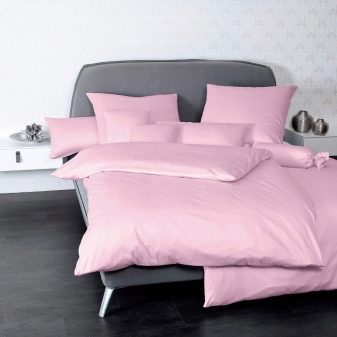
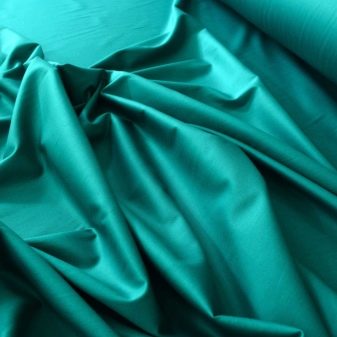
Application
Mako satin is a fabric that can be used universally. Since it is very similar to silk, it is often used to make stunning evening dresses for ladies. Beautiful blouses, shirts and shirts, skirts for the summer are sewn from the material. In addition, mako satin is used in the production of spectacular accessories. For example, a skilled craftswoman can make a delicate scarf, scarf, even a tie out of it. Sometimes even light summer belts are made from the described material.

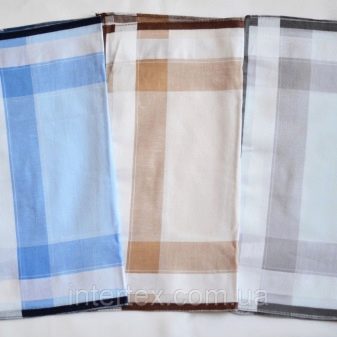
Most often, however, mako satin is used to make bed linen. Sheets, duvet covers and pillowcases can be either solid color or with voluminous and very different patterns. The fabric is incredibly pleasant to the body. It creates the effect of luxury. In addition, it is suitable even for people with hypersensitive skin, for whom any roughness and lumps on the bed can cause redness.
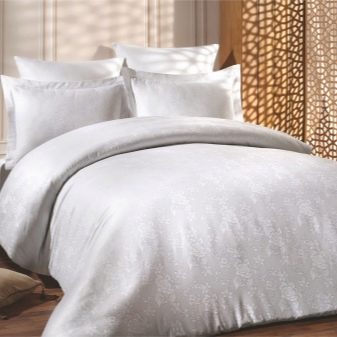
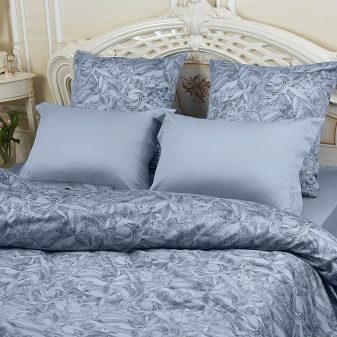
They also sew beautiful bedspreads from mako-satin. They look great in bedrooms with any interior design.
How to choose?
In order for a product made of mako-satin to serve for many years and fully fulfill the functions declared by the manufacturer, the purchase must be approached responsibly. Here are some guidelines for buying a worthwhile product.
-
The density of the fabric. Natural mako satin always has a high density. It is at least 130 grams per square meter. m. If the density is lower, in front of you is a low-quality product.
-
Strength. Good material will not stretch. It's easy to check right in the store. In addition, there will be no crackling sound when trying to stretch it. The seams must be well finished, the fabric cannot crumble at the edges.
-
Natural composition. Always pay attention to the information on the label. Manufacturers often try to contrive by writing “mako-satin” in large print, and additional information in small and somewhere on a different label. Examine the product carefully, because on that other label it may be said about the presence of synthetics in the fabric.
-
Lack of extraneous odors. Mako satin linen cannot smell like paint or any chemicals. Even a suspicion of a specific scent should make you refuse to buy.
-
Price. Mako satin is much more expensive than regular satin, and you shouldn't be happy if you are offered materials at a low price. Here the cost fully justifies the quality, and you need to be prepared for this.
-
No creasing. Real mako satin practically does not wrinkle. Try to crumple the fabric in your hand - and you will see how in a couple of seconds it will return to its original state.

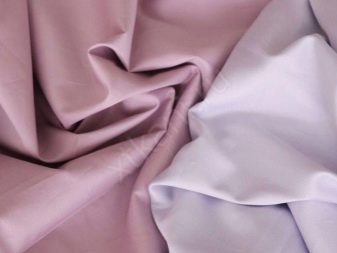
Care rules
Egyptian cotton products have another huge plus - they do not require any complicated care. But it's better to remember a few simple rules to make the thing last longer.
-
Any stains on fabrics should be removed before immersing the garment in the washing machine. For snow-white materials, you can use a bleach, but not aggressive, for colored materials - a stain remover such as Vanish. It is better not to use folk methods.
-
Before loading items into the drum, they must be turned inside out. Although the products do not dye other linen, it is better to wash them separately from the same synthetics, because it is just capable of dyeing everything that will be in the machine.
-
Any items, including bed linen, are washed at a temperature of 40 degrees. Excess can start the process of fiber destruction. Powders, in principle, you can take any, but it is important that these are mild cleaning compounds. The best option is capsules and liquid products from trusted brands. At the end of the wash, you can use a rinse aid.
-
After the item is dry, you can put it in the closet right away. Ironing is not necessary for mako-satin products, but if you want to fold things neatly, you can iron it.


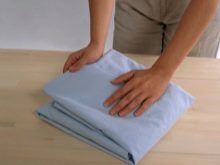
The main thing is to set the "cotton" mode on the iron and iron things while wet.








